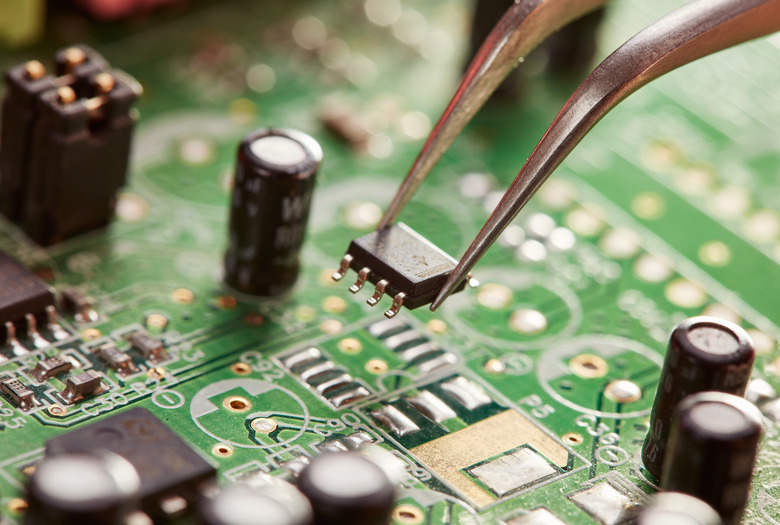How To Use A 12V Diode To Prevent Backfeed
Rectifier diodes will only conduct electrical current in one direction. This characteristic allows diodes to convert AC electrical energy into DC electrical energy. However, it can also prevent DC current from reversing direction. Diodes are often used in conjunction with solar cells to prevent backfeed DC current. When a solar cell is deprived of light, it no longer generates DC power. Without a diode wired in series with the solar cell, a battery that is connected to the solar cell will backfeed electrical current into the cell and overheat the solar cell.
Step 1
Cut two lengths of electrical wire at least 6 inches long. Strip ½ inch of insulation from the ends of each wire segment.
Step 2
Twist together one end of the first wire with the cathode lead from the diode. The cathode lead is specified on the diode case with a line or dot near the cathode lead wire.
Step 3
Use the soldering iron to melt a small drop of solder to the twisted wire joint created between the diode and the first wire. Use the tip to smooth the soldered joint until it is shiny and free of lumps.
Step 4
Place a ring terminal over the loose end of the first wire. Solder the terminal to the wire.
Step 5
Place the remaining ring terminal over one end of the second wire, and solder the wire to the terminal.
Step 6
Attach the diode's anode lead to the "+" terminal on the solar panel. Attach the unoccupied end of the second wire to the "-" terminal on the solar panel.
Step 7
Place a screw through the hole in the ring terminal attached to the first wire. Place this screw through the positive battery terminal, and screw on the first machine nut. Tighten the machine nut until it holds the ring terminal snugly against the battery terminal.
Step 8
Place the remaining screw through the hole in the ring terminal attached to the second wire. Place this screw through the negative battery terminal, and screw on the second machine nut. Tighten the machine nut until it holds the ring terminal snugly against the battery terminal.
Things Needed
- Electrical pliers
- Electrical wire
- Rectifier diode designed for use in 12-volt DC circuit
- Electronic solder
- Soldering iron
- Solder-type ring terminals (2)
- 12-volt battery with L-type terminals
- 12-volt solar panel
- Machine screws
- Machine nuts
- Adjustable wrench
TL;DR (Too Long; Didn't Read)
Current will flow through the diode while light is shining on the solar panel. If the solar panel is in a dark area, the current flow will stop. A diode used in this fashion is called a "blocking diode."
Cite This Article
MLA
Sandoval, David. "How To Use A 12V Diode To Prevent Backfeed" sciencing.com, https://www.sciencing.com/use-12v-diode-prevent-backfeed-8239206/. 13 March 2018.
APA
Sandoval, David. (2018, March 13). How To Use A 12V Diode To Prevent Backfeed. sciencing.com. Retrieved from https://www.sciencing.com/use-12v-diode-prevent-backfeed-8239206/
Chicago
Sandoval, David. How To Use A 12V Diode To Prevent Backfeed last modified March 24, 2022. https://www.sciencing.com/use-12v-diode-prevent-backfeed-8239206/
